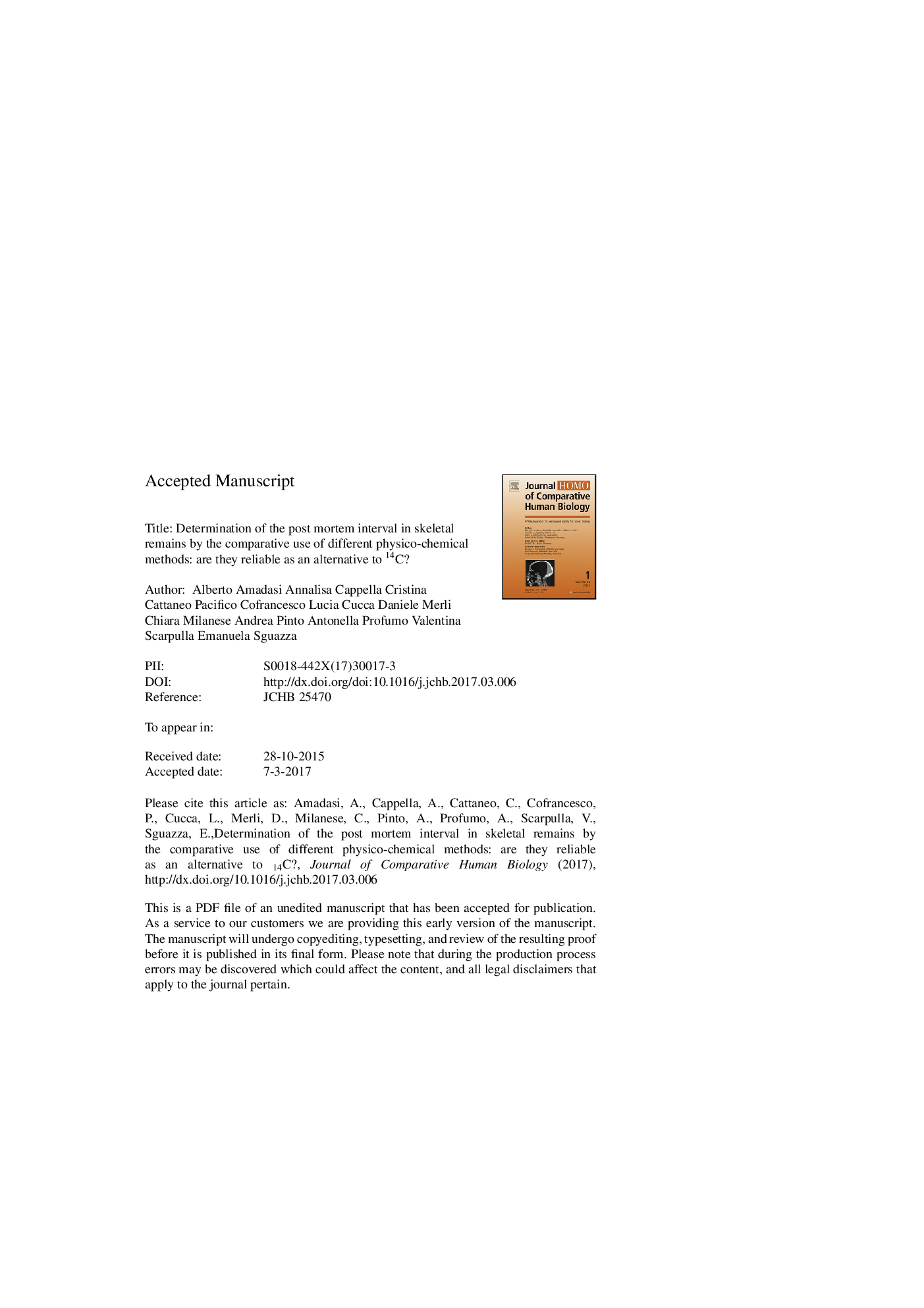| Article ID | Journal | Published Year | Pages | File Type |
|---|---|---|---|---|
| 4760457 | HOMO - Journal of Comparative Human Biology | 2017 | 23 Pages |
Abstract
The investigation was performed on a total of 24 archeological and forensic bone samples with known PMI, with inductively coupled plasma optical emission spectrometer (ICP-OES), inductively coupled plasma quadruple mass spectrometry (ICP-MS), Fourier transform infrared (FT-IR) spectroscopy, energy dispersive X-ray analysis (EDX), powder X-ray diffraction analysis (XRPD) and scanning electron microscopy (SEM). Finally, the feasibility of such alternative methods was discussed. Some results such as carbonates/phosphates ratio from FT-IR, the amounts of organic and inorganic matter by EDX, crystallite sizes with XRPD, and surface morphology obtained by SEM, showed significant trends along with PMI. Though, from a chemical point of view cut-off values and gold-standard methods still present challenges, and rather different techniques together can provide useful information toward the assessment of the PMI of skeletal remains. It is however clear that in a hypothetical flowchart those methods may be placed practically at the same level and a choice should always consider the evaluation of results by each technique, execution times and a costs/benefits relationship.
Related Topics
Life Sciences
Agricultural and Biological Sciences
Ecology, Evolution, Behavior and Systematics
Authors
Alberto Amadasi, Annalisa Cappella, Cristina Cattaneo, Pacifico Cofrancesco, Lucia Cucca, Daniele Merli, Chiara Milanese, Andrea Pinto, Antonella Profumo, Valentina Scarpulla, Emanuela Sguazza,
